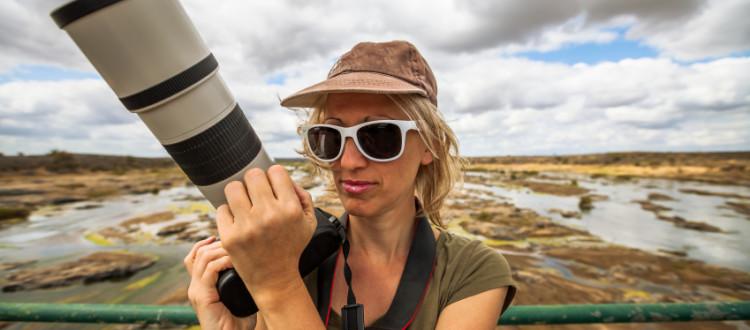The Secret To Stunning Wildlife Photography
Wildlife photography is a breed all its own. Capturing animals on camera is much more difficult than taking still shots of landscapes, furniture, or people because the subjects move constantly. Animals are finicky, shy, and secretive, making them the perfect challenge for experienced photographers and beginners alike. If you are interested in taking pictures of animals, check out some of the tips below. We’ll show you how to get the best image possible.
The Right Equipment For Animal Photography
Having the right equipment makes all the difference when it comes to animal photography. Most semi-experienced photographers use DSLR cameras because of their versatility, clarity, availability, and durability. In general, look for a camera with a high ISO capability. This will allow you to work in areas of low lighting under a forest canopy), and it will allow you to use faster shutter speeds. Even slow moving animals can be hard to capture if your shutter speeds are low.
You also need to have a lens that can handle a wide range of zoom lengths, or multiple lenses that can cover any type of shot you want to take. For a good start, you may use something like a 28-300mm lens, which will allow you to catch animals far away and relatively close up. You may supplement that with shorter and longer range lenses, depending on the animals you want to photograph.
If you want to take pictures of tiny animals, like spiders, ants, tadpoles, etc., you may consider investing in a macro lens. This can be used for other close-up details, like the inside of a flower or the grains on an ant hill. Consider the type of wildlife photography you plan to explore, and use that to determine which lenses you need.
Adjust The Exposure Beforehand
The exposure value on a camera represents how much light it takes in when capturing a photo. If you have your camera set to automatic, the device will try to make adjustments for you. While this is convenient and often yields good results, it may not always let you get the shot you want to take.
Take a test photo just before you start photographing wildlife so you can see what your pictures may look like. Depending on the lighting, the image may look too dark or too light to properly see the details in the animals. In your camera settings, there will be an area with a long bar that has numbers along it – 0 is in the middle, and then the numbers go up and down on either side. Negative numbers mean that the camera will take in less light. Predictively, positive numbers take in more light. Move your exposure setting along the spectrum until you get the right balance of brightness for your photos.
Note that white and reflective surfaces can make the exposure balance challenging. Snow, white feathers/fur, and puddles of water can make an image look bright because of the sun. You may need to adjust your angle or timing to avoid these tricky details in your photos.
Take Multiple Pictures With Slow Movements
With wildlife photography, you usually don’t get a second chance for “the perfect shot.” Thus you need to take multiple pictures in a swift, fluid manner to hopefully land the shot you want.
Slow Approach
When you approach an animal, its natural instinct is to run away. Spot the animal from far away, and zoom in to snap whatever picture you can. Slowly move towards the animal, snapping photos along the way. If you stay quiet and move slowly, you can usually sneak up on just about any creature in the wild. Of course, maintain your distance if it is something dangerous.
Quick Thinking
If something catches your eye quickly, you may not have time to slowly approach them. In that case, just make sure your camera is ready to go, and take whatever photos you can. Unfortunately, wildlife photography is often reliant on luck, not just your skills as a cameraperson.
Get Down To Their Level
Taking pictures from a human perspective may lead to good shots, but if you want truly amazing ones, get down to the animal’s level. This is especially true for squirrels, turtles, and other critters like that who spend most of their time on the ground. Crouch down, and set your camera on the floor if you have to, as if your camera is eye-to-eye with your subject. Explore creative up-angles with your shots, and see what you can come up with.
Practice With Your Pets Or At The Zoo
Before you make a trip to nature for your wildlife photography, consider the animals you have access to in your own back yard. Your dog or cat may make a great subject for your first few rounds of animal photography, as you get used to camera angles, lighting, shutter speeds, etc. If you do not have pets or you want to try your hands with something less domestic, go to a local zoo and take pictures there. This will help you see what your zoom capabilities are, so you can determine how far or close you will need to be to your subjects in the wild.
With diligent focus and dedication, you will be able to capture amazing photos of the animals you love.











